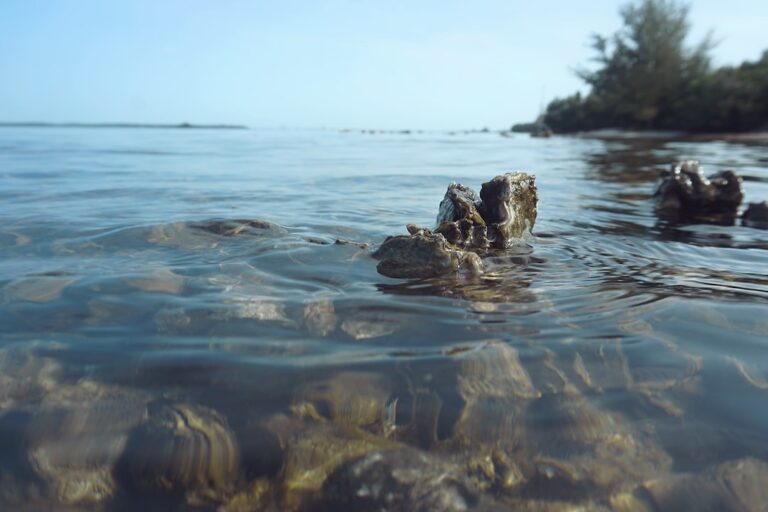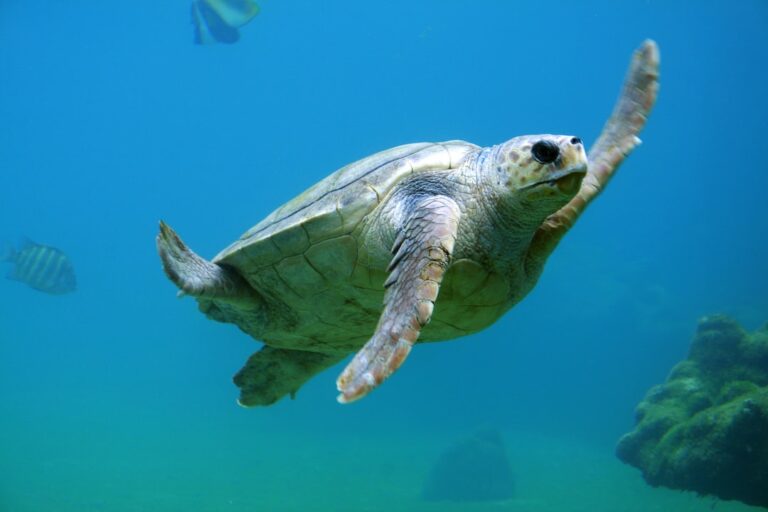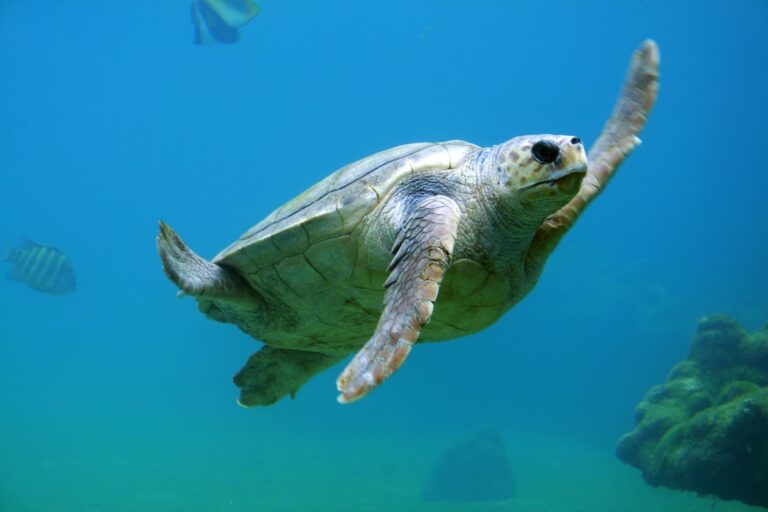Are Turtles Immune To Jellyfish Stings?
Turtles and jellyfish have a unique and complex relationship that has fascinated scientists for years. Turtles are known to interact with jellyfish in various ways, from eating them as a food source to avoiding them due to their stinging capabilities. This relationship is not only intriguing but also important to study, as it can provide valuable insights into the adaptations and behaviors of both turtles and jellyfish.
Understanding the dynamics between turtles and jellyfish can help researchers gain a better understanding of the marine ecosystem as a whole. Turtles play a crucial role in maintaining the balance of marine ecosystems, and their interactions with jellyfish can have significant impacts on both populations. By studying this relationship, scientists can gain insights into the ecological implications of these interactions and potentially develop strategies for conservation efforts.
Table of Contents
Understanding the Science Behind Jellyfish Stings
Jellyfish stings are a common occurrence in oceans around the world, and understanding how they work is essential for both human safety and the study of turtle-jellyfish interactions. When a jellyfish comes into contact with a human or animal, it releases venomous cells called nematocysts, which inject toxins into the victim’s skin. These toxins can cause pain, redness, swelling, and in some cases, more severe reactions such as difficulty breathing or even cardiac arrest.
Different species of jellyfish have different types of venom, which can vary in potency and effects on humans and animals. Some jellyfish species have venom that primarily affects the skin, causing localized pain and irritation. Others have venom that affects the nervous system or cardiovascular system, leading to more severe symptoms. Understanding these differences is crucial for developing effective treatments for jellyfish stings.
How Do Turtles Interact with Jellyfish?
Turtles encounter jellyfish in their natural habitat in various ways. Some turtle species actively seek out jellyfish as a food source, while others may accidentally come into contact with them while foraging for other prey. Turtles have been observed to eat jellyfish whole, using their powerful jaws to crush the jellyfish’s body and consume it. This behavior is particularly common in species such as the leatherback turtle, which has a specialized diet that consists mainly of jellyfish.
However, not all turtles interact with jellyfish in the same way. Some species, such as the green turtle, have been observed to actively avoid jellyfish due to their stinging capabilities. These turtles have developed strategies to identify and avoid jellyfish, such as using their vision or sense of smell to detect the presence of jellyfish in the water. This behavior is thought to be a result of the turtles’ previous encounters with jellyfish stings, which can be painful and potentially harmful.
The Physical Adaptations of Turtles Against Jellyfish Stings
Turtles have developed various physical adaptations to protect themselves against jellyfish stings. One of the most notable adaptations is the presence of a thick layer of skin on their flippers and shell, which acts as a barrier against the venomous cells of jellyfish. This thick skin is particularly important for species like the leatherback turtle, which regularly consumes large quantities of jellyfish.
In addition to their thick skin, turtles also have specialized glands that produce mucus, which further protects them from jellyfish stings. This mucus acts as a lubricant, making it difficult for the venomous cells of jellyfish to adhere to the turtle’s skin. Some turtle species also have spines or scales on their flippers and shell, which provide an additional layer of protection against jellyfish stings.
Can Turtles Still Be Affected by Jellyfish Stings?
While turtles have developed physical adaptations to protect themselves against jellyfish stings, they are not completely immune to their effects. In some cases, turtles can still be affected by jellyfish stings, especially if they come into contact with particularly potent venom or if they are stung in vulnerable areas such as their eyes or mouth.
There have been documented cases of turtles experiencing adverse effects from jellyfish stings. For example, some turtles have been found with injuries or infections caused by jellyfish stings, which can be particularly problematic if the stings occur in sensitive areas such as the eyes or throat. These cases highlight the importance of studying the interactions between turtles and jellyfish to better understand the potential risks and develop strategies for mitigating them.
The Role of Turtle Immune Systems in Fighting Jellyfish Toxins
Turtles have complex immune systems that play a crucial role in fighting off toxins, including those produced by jellyfish. When a turtle is stung by a jellyfish, its immune system responds by producing antibodies that neutralize the toxins and prevent them from causing further harm. This immune response is similar to the way humans and other animals respond to infections or toxins.
The effectiveness of a turtle’s immune response to jellyfish toxins can vary depending on various factors, including the species of turtle and the specific type of venom involved. Some turtle species have been found to have higher levels of immunity to jellyfish toxins, while others may be more susceptible to their effects. Understanding these differences can provide valuable insights into the adaptations and evolution of turtle immune systems.
Do Different Turtle Species Have Different Levels of Immunity?
Different turtle species have been found to have varying levels of immunity to jellyfish toxins. For example, leatherback turtles are known to have a high level of immunity to jellyfish venom due to their specialized diet that consists mainly of jellyfish. These turtles have evolved to tolerate and process large quantities of jellyfish toxins without experiencing adverse effects.
On the other hand, some turtle species may be more susceptible to jellyfish stings. For example, green turtles have been found to have lower levels of immunity to jellyfish toxins compared to leatherback turtles. This may be due to their avoidance behavior, which reduces their exposure to jellyfish stings and therefore limits their immune system’s ability to develop a strong response.
Are Baby Turtles More Susceptible to Jellyfish Stings?
There is some evidence to suggest that baby turtles may be more vulnerable to jellyfish stings than adult turtles. Baby turtles are smaller and have less developed immune systems compared to adults, making them more susceptible to the effects of jellyfish toxins. Additionally, baby turtles may not have developed the same level of physical adaptations as adults, such as the thick skin or specialized glands that protect against jellyfish stings.
However, it is important to note that baby turtles also have different behaviors and habitats compared to adults, which may reduce their exposure to jellyfish stings. For example, baby turtles typically stay close to shore and in shallow waters, where they are less likely to encounter jellyfish. As they grow and venture into deeper waters, their exposure to jellyfish may increase, but by then, they may have developed stronger immune systems and physical adaptations.
The Importance of Studying Turtle-Jellyfish Interactions
Studying the relationship between turtles and jellyfish is important for several reasons. Firstly, it provides valuable insights into the adaptations and behaviors of both turtles and jellyfish. Understanding how turtles interact with jellyfish can help researchers gain a better understanding of the ecological implications of these interactions and how they contribute to the overall balance of marine ecosystems.
Secondly, studying turtle-jellyfish interactions can help researchers develop strategies for conservation efforts. Turtles play a crucial role in maintaining the health of marine ecosystems, and their interactions with jellyfish can have significant impacts on both populations. By understanding the dynamics between turtles and jellyfish, scientists can develop strategies to protect turtle populations and mitigate the potential negative effects of jellyfish blooms.
Lastly, studying turtle-jellyfish interactions can also have practical applications for human safety. Jellyfish stings are a common occurrence in oceans around the world, and understanding how turtles interact with jellyfish can provide insights into how humans can avoid or mitigate the risks associated with jellyfish stings. This research can help inform public safety measures and the development of effective treatments for jellyfish stings.
The Fascinating Relationship Between Turtles and Jellyfish
The relationship between turtles and jellyfish is a fascinating and complex one. Turtles interact with jellyfish in various ways, from eating them as a food source to avoiding them due to their stinging capabilities. Turtles have developed physical adaptations and immune responses to protect themselves against jellyfish stings, but they are not completely immune to their effects.
Studying the interactions between turtles and jellyfish is important for understanding the ecological implications of these interactions, developing conservation strategies, and improving human safety. By gaining a better understanding of this relationship, scientists can contribute to the conservation of turtle populations and the mitigation of the potential negative effects of jellyfish blooms. The unique and complex relationship between turtles and jellyfish continues to intrigue researchers and provides valuable insights into the dynamics of marine ecosystems.
If you’re interested in reptiles, you might also enjoy reading the article “Do Iguanas Eat Meat?” on Reptile Friend. It explores the dietary habits of iguanas and whether or not they consume meat. It’s fascinating to learn about the different feeding behaviors of reptiles and how they adapt to their environments. Check it out here!







